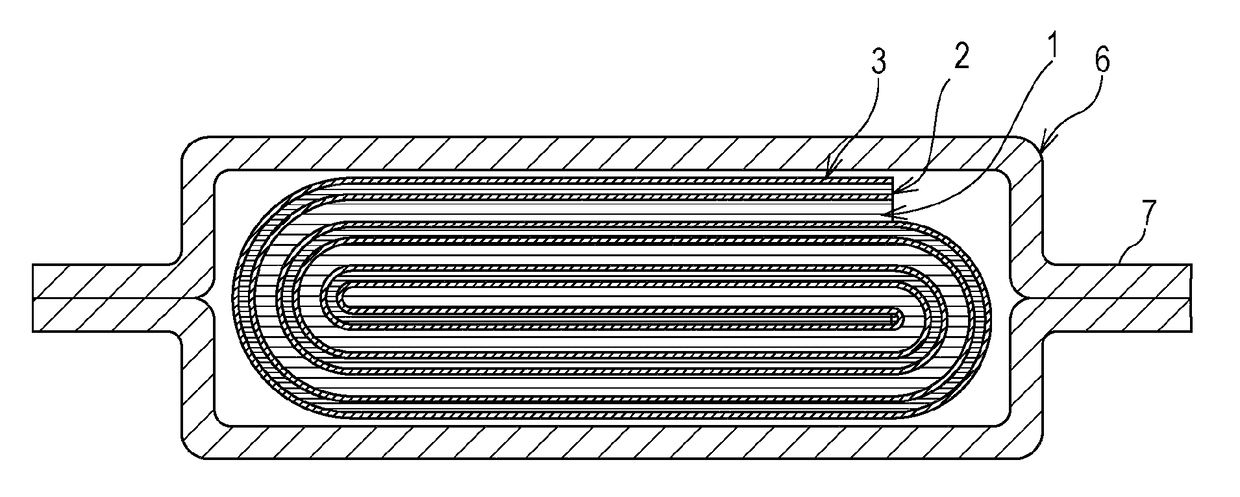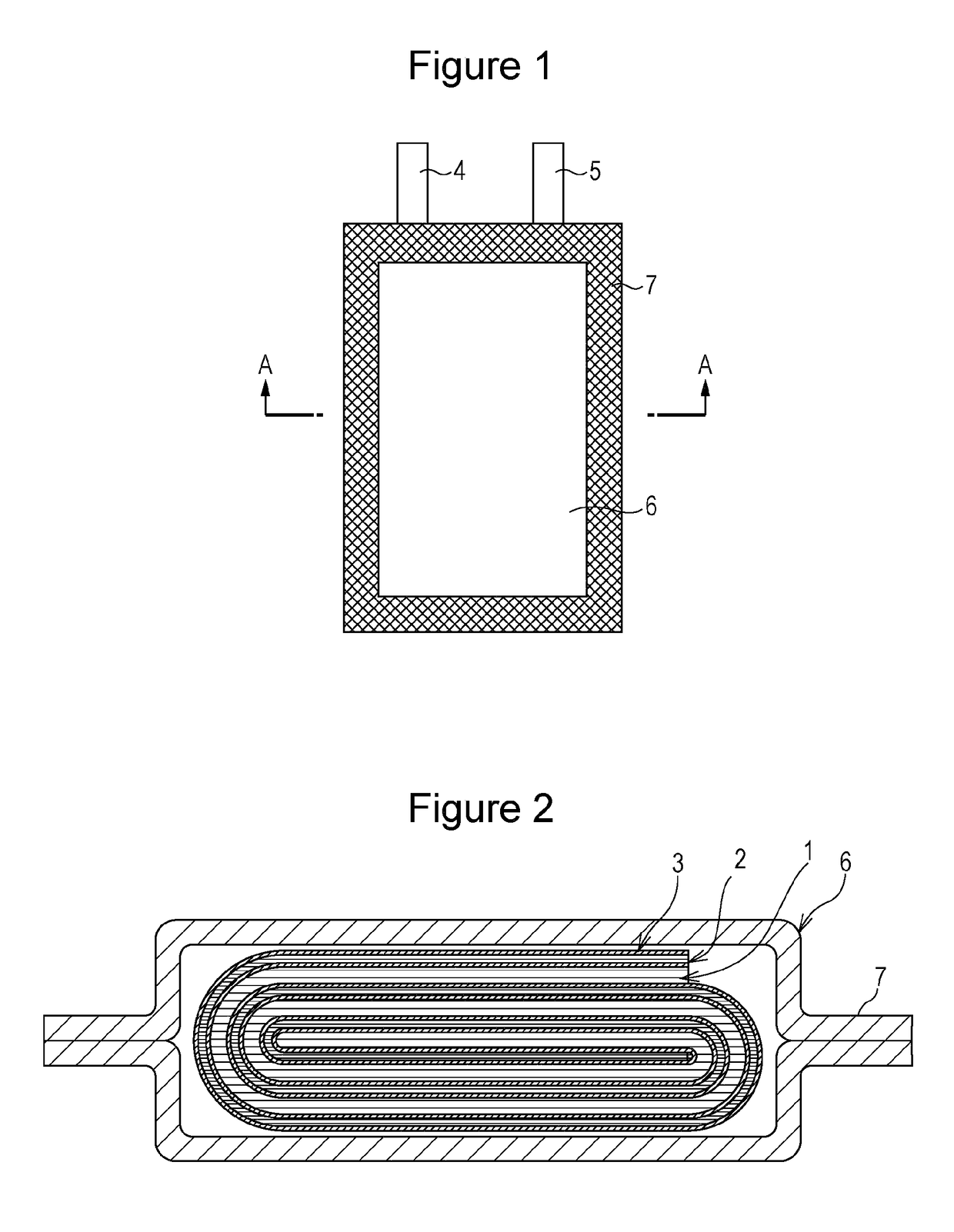Nonaqueous electrolyte secondary battery
a technology of nonaqueous electrolyte and secondary batteries, which is applied in the direction of cell components, sustainable manufacturing/processing, and final product manufacturing, can solve the problems that batteries tend to become less reliable with increasing capacity, and achieve the effect of suppressing the swelling of batteries
- Summary
- Abstract
- Description
- Claims
- Application Information
AI Technical Summary
Benefits of technology
Problems solved by technology
Method used
Image
Examples
example 1
Fabrication of Positive Electrodes
[0031]Lithium cobaltate as a positive electrode active material, acetylene black as a carbon conductive agent, and PVDF (polyvinylidene fluoride) were mixed together in 95:2.5:2.5 by mass. The mixture was mixed together with NMP as a solvent in a mixer to give a positive electrode mixture slurry.
[0032]The slurry thus prepared was applied to both sides of aluminum foil and was dried. The foil was then rolled to give a positive electrode. The bulk density of the positive electrode was controlled to 3.60 g / cm3.
[0033]An aqueous slurry for the formation of inorganic particle layers was prepared by adding a polyethylene glycol having an average molecular weight of 200 (product name “Polyethylene Glycol 200” manufactured by Wako Pure Chemical Industries, Ltd.) to components including water as a solvent, titanium oxide (TiO2, average particle diameter: 0.25 μm, without surface treatment layers) as inorganic particles, carboxymethyl cellulose (CMC) as a disp...
example 2
[0039]A battery was fabricated in the same manner as in EXAMPLE 1, except that the polyethylene glycol added to the aqueous slurry for the formation of inorganic particle layers was changed to one having an average molecular weight of 1000 (product name “Polyethylene Glycol 1000” manufactured by Wako Pure Chemical Industries, Ltd.). The battery fabricated in this manner will be referred to as battery A2 hereinafter.
example 3
[0040]A battery was fabricated in the same manner as in EXAMPLE 1, except that the polyethylene glycol added to the aqueous slurry for the formation of inorganic particle layers was changed to one having an average molecular weight of 6000 (product name “Polyethylene Glycol 6000” manufactured by Wako Pure Chemical Industries, Ltd.).
[0041]The battery fabricated in this manner will be referred to as battery A3 hereinafter.
PUM
| Property | Measurement | Unit |
|---|---|---|
| temperature | aaaaa | aaaaa |
| charge voltage | aaaaa | aaaaa |
| particle diameter | aaaaa | aaaaa |
Abstract
Description
Claims
Application Information
 Login to View More
Login to View More - R&D
- Intellectual Property
- Life Sciences
- Materials
- Tech Scout
- Unparalleled Data Quality
- Higher Quality Content
- 60% Fewer Hallucinations
Browse by: Latest US Patents, China's latest patents, Technical Efficacy Thesaurus, Application Domain, Technology Topic, Popular Technical Reports.
© 2025 PatSnap. All rights reserved.Legal|Privacy policy|Modern Slavery Act Transparency Statement|Sitemap|About US| Contact US: help@patsnap.com


